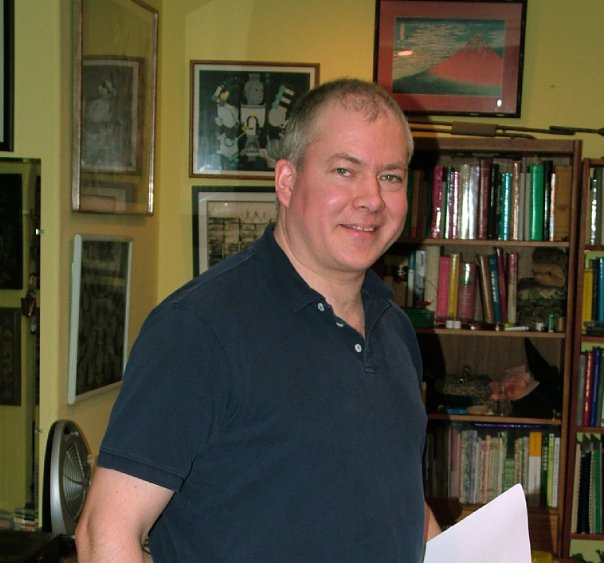A Place to Start
by Michael Dylan Welch
A. E. Housman once wrote that “I could no more define poetry than a terrier can define a rat.” Perhaps the same challenge applies to haiku, but a basic definition can at least be a place to start (most dictionaries and textbooks, however, are surprisingly superficial and even misguided). If someone tapped any of us on the shoulder and expressed a genuine interest in knowing what a haiku was, all haiku poets would have some sort of explanation. So the following is my answer, from my website. It was first published as a sidebar to "Ten Ways to Improve Your Poetry with Haiku," an essay of mine that appeared in Poet’s Market 2005 (Writer’s Digest Books, 2004) and was reprinted in The Craft & Business of Writing (Writer’s Digest Books, 2008). It also appears in Haiku Journey (MumboJumbo, 2006), a computer game for which I served as the haiku editor, and more recently appeared in The Brief: Newsletter of the British Haiku Society (#88, June 2011, page 7), and in Naomi Beth Wakan’s, The Way of Haiku (Gabriola, British Columbia: Pacific-Rim Publishers, 2012, page 8).
"Haiku in English is typically a three-line poem that uses concrete sensory images to convey or imply natural and human seasonal phenomena, using a two-part juxtapositional structure as well as simple and primarily objective language. Originally a Japanese genre of poetry, now written and adapted in many languages worldwide, traditional haiku in Japanese consists of seventeen sounds (not to be confused with syllables) in a pattern of 5-7-5. Because of differences in language, this rhythm is generally not followed for literary haiku in most languages other than Japanese. As intuitive and emotional poems, haiku often capture a sense of wonder and wholeness in presenting existence such as it is. Rather than presenting one’s emotions, haiku present the cause of one’s emotions, thus empowering the reader to have the same intuitive reaction to an experience that the poet had."
Examples of haiku by Michael Dylan Welch:
spring breeze—
the pull of her hand
as we near the pet store
meteor shower . . .
a gentle wave
wets our sandals
warm winter evening—
the chairs askew
after the poetry reading
 Michael Dylan Welch has been writing haiku since 1976, and publishing reviews and essays about haiku since 1989. His work has appeared in hundreds of journals and anthologies in at least 20 languages, and he has won first place in various haiku contests. His most recent book is Fire in the Treetops: Celebrating Twenty-Five Years of Haiku North America. He is a director of the Haiku North America conference, cofounder of the American Haiku Archives, founder of National Haiku Writing Month (www.nahaiwrimo.com), a longtime officer of the Haiku Society of America and Haiku Northwest, and director of the Seabeck Haiku Getaway. His website is www.graceguts.com.
Michael Dylan Welch has been writing haiku since 1976, and publishing reviews and essays about haiku since 1989. His work has appeared in hundreds of journals and anthologies in at least 20 languages, and he has won first place in various haiku contests. His most recent book is Fire in the Treetops: Celebrating Twenty-Five Years of Haiku North America. He is a director of the Haiku North America conference, cofounder of the American Haiku Archives, founder of National Haiku Writing Month (www.nahaiwrimo.com), a longtime officer of the Haiku Society of America and Haiku Northwest, and director of the Seabeck Haiku Getaway. His website is www.graceguts.com.
